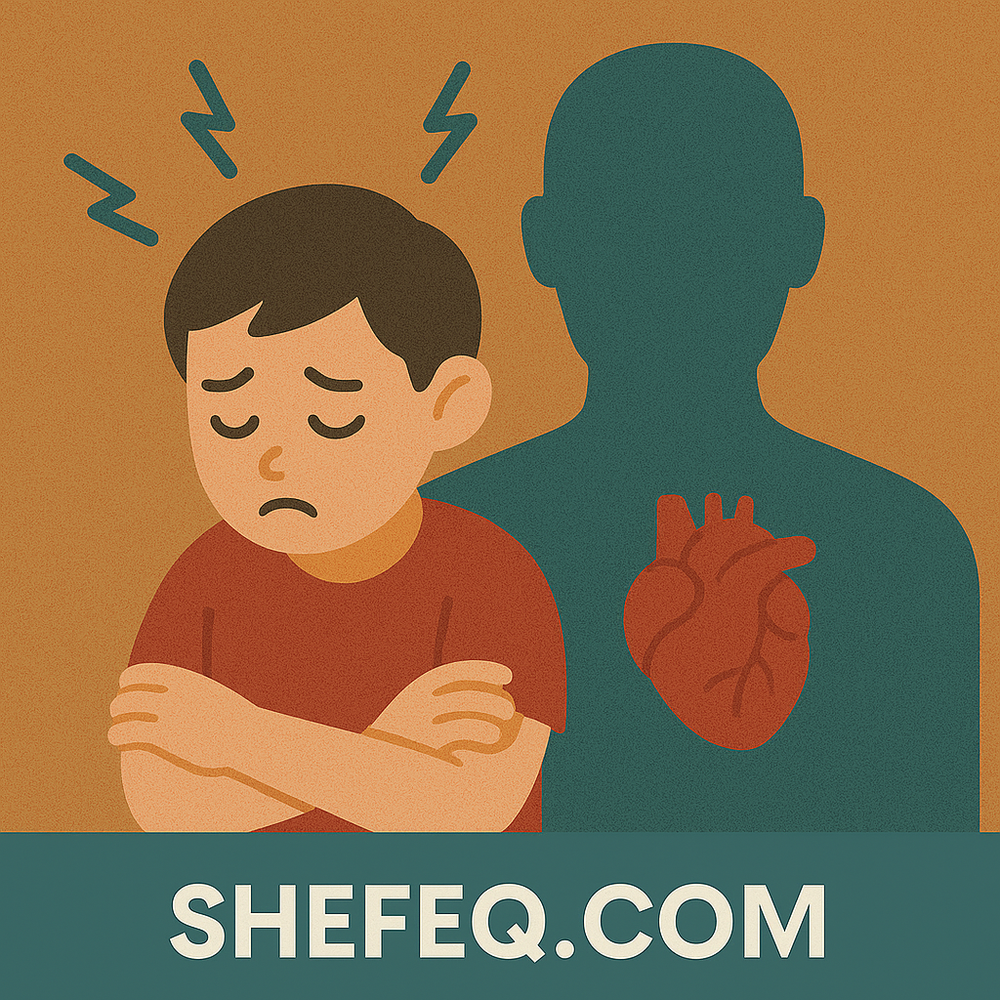The Past Doesn't Pass – It Lives in the Body...
I. INTRODUCTION: WHEN A CHILD GOES SILENT, A WHOLE LIFE FALLS SILENT
Sometimes, when a 40-year-old speaks, it’s actually a 6-year-old child crying within. Childhood traumas — invisible to the eye but absorbed deep into the layers of the soul — silently script the entire life scenario. Inner voices like “I’m not enough,” “Nobody loves me,” “I’ll always be abandoned” are often echoes of pain torn from childhood.
In this article, we will explore what childhood trauma is, the forms it takes, and how it affects our adult lives.
II. WHAT IS CHILDHOOD TRAUMA?
Trauma is an event that shakes the emotional system, is difficult to comprehend or process, and often brings fear, confusion, pain, and a sense of abandonment. When such events happen in childhood, the imprints they leave in the brain and body are deeper and more lasting.
Childhood traumas are divided into two types:
-
Overt traumas – Physical abuse, sexual abuse, severe accidents, domestic violence, loss of a parent.
-
Hidden traumas – Neglect, feeling unloved, emotional absence, constant criticism, conditional love (“If you’re good, I’ll love you”).
III. HOW THE BRAIN AND BODY STORE TRAUMA
Traces in the child’s brain In a child, the parts of the brain responsible for emotional regulation are not yet fully developed, so trauma leaves marks directly on the limbic system — the emotional center. This affects:
-
Future emotional reaction patterns;
-
Sensitivity to danger;
-
Ability to trust.
Trauma remains at the cellular level Epigenetic studies show that emotional blows in childhood affect gene expression — increasing the risk of depression, anxiety, and psychosomatic illnesses in adulthood.
IV. FORMS OF CHILDHOOD TRAUMA
-
Physical abuse — Regular beatings, living in fear, developing in an atmosphere of threat.
-
Emotional neglect — When parents are “emotionally absent.” If no one comforts the child when they cry, the child begins to suppress emotions.
-
Sexual abuse — Violating a child’s physical boundaries damages their relationship with their body and trust.
-
Culture of fear and criticism — Phrases like “They’ll take you away,” “You’re bad,” “You can’t do anything” degrade the child’s self-worth.
V. HIDDEN TRACES OF TRAUMA IN ADULTHOOD
Even if childhood traumas seem “forgotten,” they often resurface in five key areas:
-
Relationship problems — Fear of attachment, fear of abandonment, avoidance of intimacy.
-
Constant self-blame — Taking responsibility for everything. The inner child keeps saying “It was all my fault.”
-
Perfectionism and need for validation — Seeking affirmation from the world that was missing in childhood.
-
Emotional blockage — Inability to express feelings, emotional suppression, inability to cry.
-
Psychosomatic illnesses — Skin issues, digestive disorders, headaches, anxiety, panic attacks, insomnia.
VI. THE SCRIPT WRITTEN IN CHILDHOOD: “THE CHILD WITHIN”
Many psychologists say: “Until the inner child is healed, growing up is impossible.”
Messages we received in childhood:
-
“Be quiet!” → fear of expression
-
“Don’t cry!” → emotional blockage
-
“Be good, and I’ll love you” → conditional love
-
“No one loves you” → sense of worthlessness
Over time, these messages become part of our belief system and shape our entire life.
VII. SEEING TRAUMA FROM WITHIN, NOT FROM THE OUTSIDE
Real example: A man named Elgiz, 38 years old, is afraid of marriage. His relationships end halfway, and he constantly feels “not enough.” In therapy, it turns out that in childhood, his parents often told him, “You’re not a real man,” “We didn’t want you.” This rejection shaped his fear of love and distrust of himself.
VIII. THE HEALING PROCESS: LISTENING TO THE CHILD
Can trauma be healed? — Yes, but only if it is acknowledged.
Paths to healing:
-
Psychotherapy (especially EMDR, body-oriented therapy, inner child work)
-
Journaling — turning feelings into words
-
Dialogue with the inner child — “I hear you,” “You were wronged”
-
Meditation and breathing techniques — calming the nervous system
IX. A MESSAGE FOR PARENTS
Understanding the depth of trauma is vital for today’s parents. A child needs more than toys — they need attention, gaze, touch, and compassion.
Remember:
-
Saying “I love you” is free, but healing.
-
Recognition, not criticism, shapes personality.
-
A child should learn: even after a mistake, they are still loved.
X. CONCLUSION: EVERY ADULT CARRIES A CHILD WITHIN
Childhood trauma may seem small — a word, a look, a touch. But the pain can last for years. Adult fears, anxiety, and silence are often echoes of a wounded child.
Traumas may define us, but they should not control us. Seeing your inner child and starting a dialogue with them — that is the first step to healing.
WHAT ABOUT YOU?
-
What sentence from childhood left a deep mark on you?
-
When was the last time you spoke to your inner child?
-
What do you most often say to your child today?

